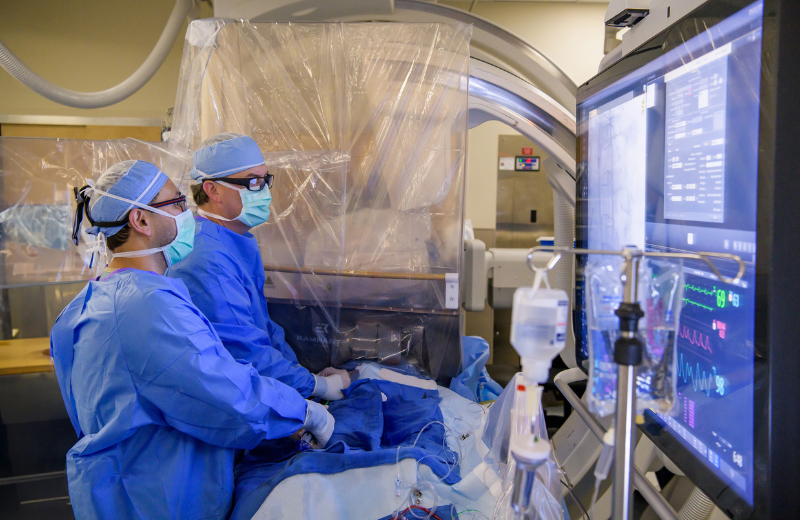
This week, a structural heart team composed of interventional cardiologists and cardiovascular surgeons at the University of Alabama at Birmingham Cardiovascular Institute were among the first in the world to complete the first valve-in-valve procedure using a new transcatheter aortic valve replacement system.
The new system offers surgeons larger coronary access window and increased space to facilitate access to a patient’s coronary arteries. This leads to lower mortality rates, lower stroke rates and overall better patient outcomes. The device will be used to treat patients with symptomatic severe aortic stenosis who are at high or extreme risk for open-heart surgery.
Aortic stenosis is a serious condition that impacts the heart health of thousands of Americans each year. It occurs when the heart’s aortic valves begin to narrow, reducing or blocking blood flow from the heart to the rest of the body. Without treatment, severe aortic stenosis can lead to death.
A TAVR is a minimally invasive heart procedure that replaces the thickened aortic valve with a man-made valve. TAVR is an alternative to open-heart surgery and can help restore blood flow and reduce the signs and symptoms of aortic valve stenosis. People who have TAVR often have shorter hospital stays than those who have surgical aortic valve replacements.
To date, surgeons at UAB have performed more TAVR procedures than any other hospital in the state. Learn more about the UAB Cardiovascular Institute at uabmedicine.org/heart.
